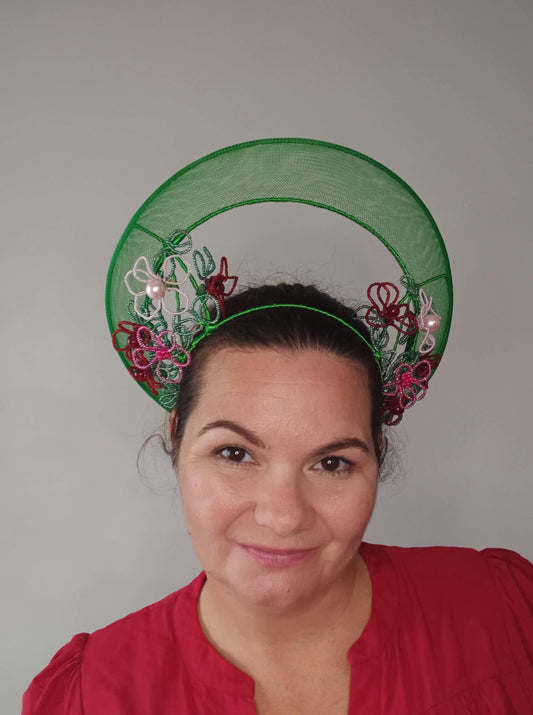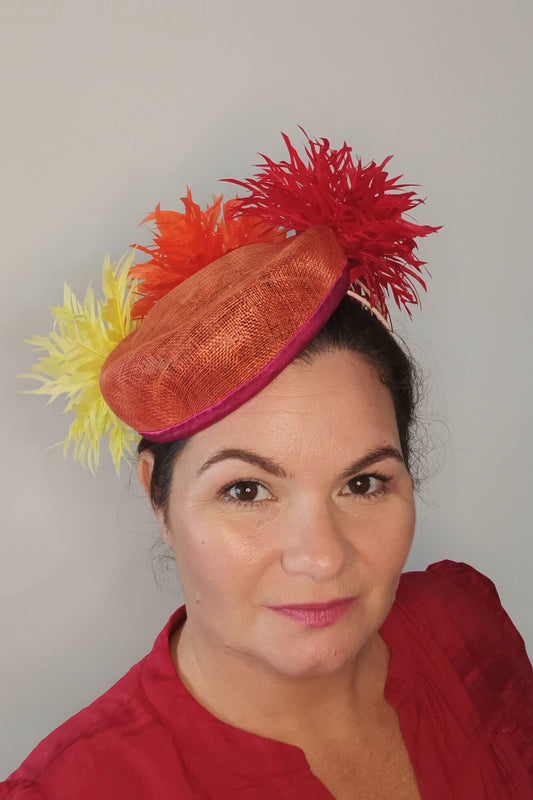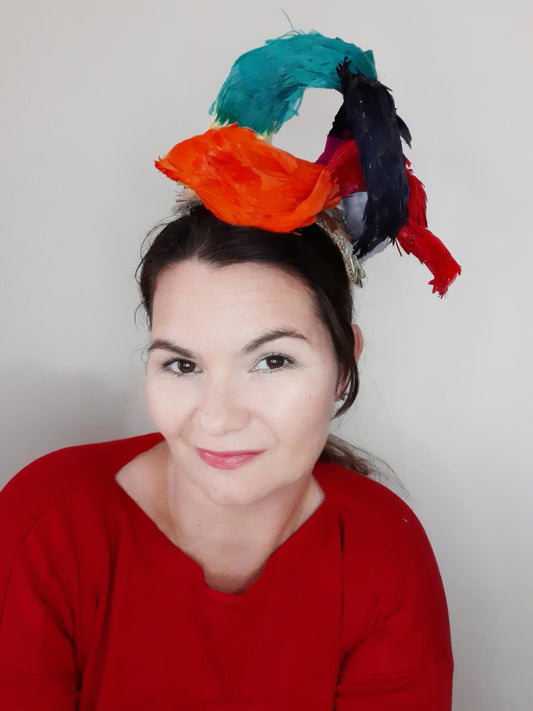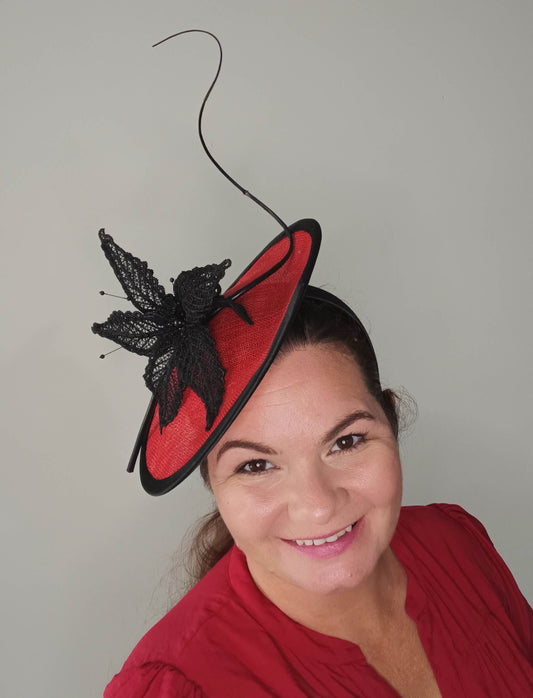
Bold, passionate, and impossible to ignore—red commands attention like no other colour.
Whether it's a striking accessory or a statement piece, red can transform an outfit and evoke a sense of confidence. But while it's a colour that easily stands out, mastering the art of coordinating it with other hues is where true style shines.
Last month, we dove into the fundamentals of colour theory with pink, sharing tips on how to balance and enhance your looks. This time, we’re shifting to red, with a focus on how to pair it beautifully with other colours. If you read the previous post, feel free to scroll down to jump straight into the red-focused content. If you’re new, or just need a refresher, stick around as we revisit the core principles before uncovering how to make red your go-to colour for confident styling.
In this post, we'll begin by covering the essentials of colour theory—exploring how colours are arranged on the colour wheel and how primary, secondary, and tertiary colours interact. Once we establish this foundation, we’ll dive into the captivating realm of red, examining its unique qualities and how to coordinate it with other hues. But before we unlock the secrets of red’s allure, let’s first understand how colours work together.
The colour wheel is a diagram commonly used in visual arts to illustrate the relationships between colours in the visible spectrum. Organized in a circle, the wheel divides colours into three key categories: primary, secondary, and tertiary. Artists across disciplines—including painting, fashion, film, and design—rely on the colour wheel to develop harmonious colour schemes and to visualize how hues interact when placed side by side.
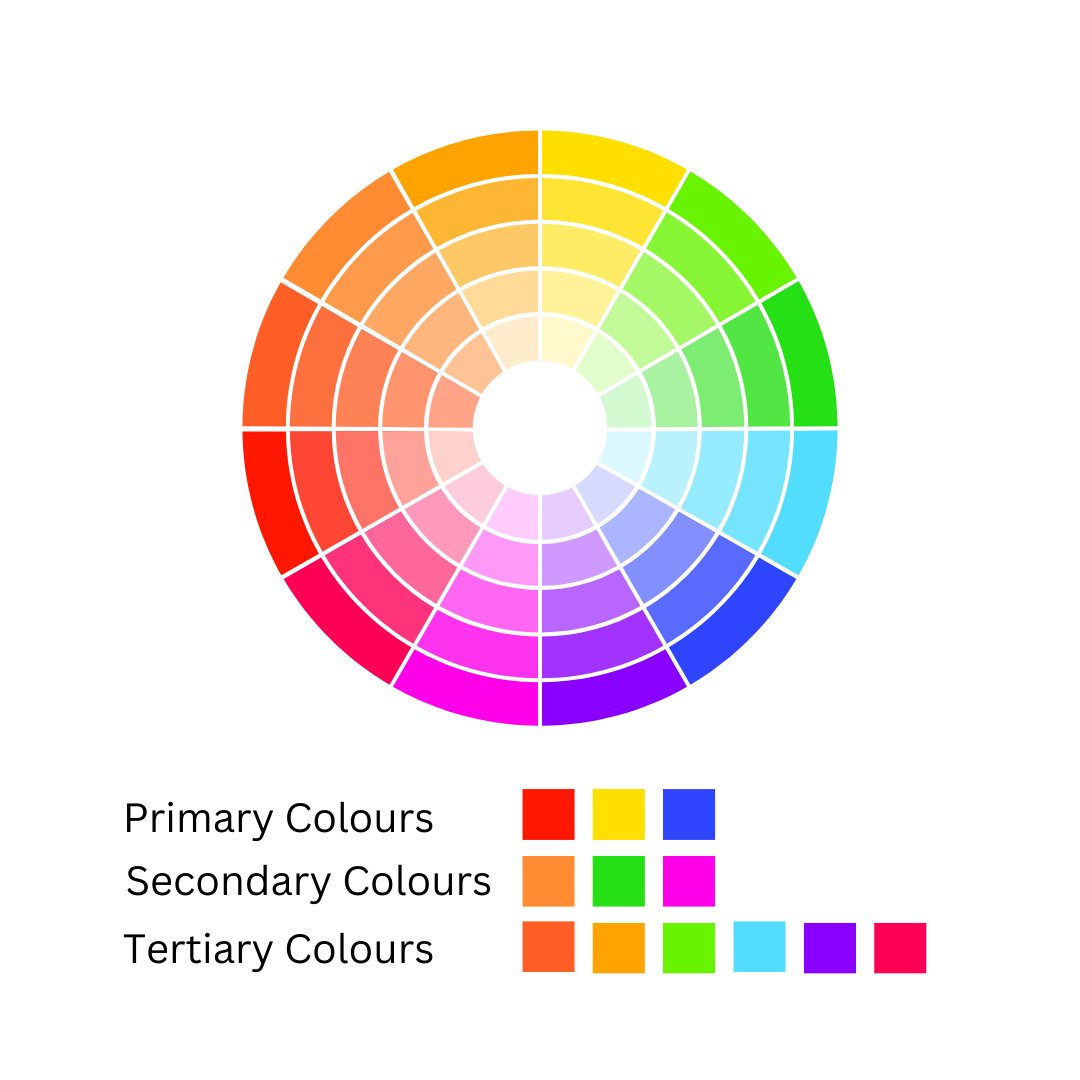
Primary colours—red, yellow, and blue—are the foundational hues that cannot be created by mixing other colours. Secondary colours are formed by combining equal parts of two primary colours, while tertiary colours result from mixing a primary colour with a neighbouring secondary colour, such as red with orange.
In colour theory, the term hue refers to the basic colour families, such as red, green, or blue—essentially the colours of the rainbow. It’s important to note that black, white, grey, and brown are not considered hues. Value describes the lightness or darkness of a colour, measured on a scale from 0 to 10, with 0 representing black and 10 representing pure white. Chroma, meanwhile, refers to a colour’s intensity or saturation—its vividness or dullness.
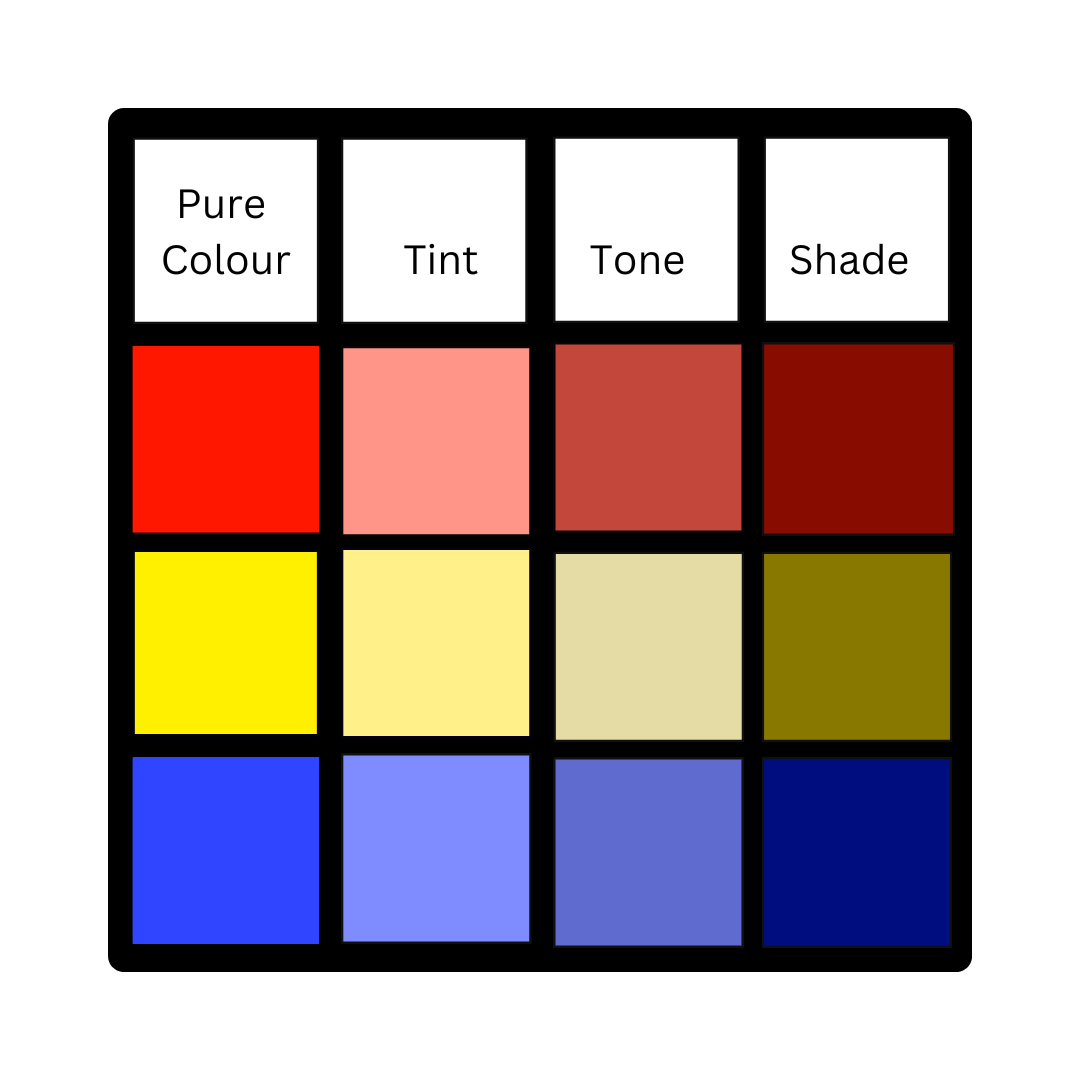
When we talk about shades, tints, and tones, we’re discussing variations of pure colour. A shade is created by mixing a pure colour with black, a tint is made by adding white, and a tone results from blending a colour with grey.
Temperature is another concept in colour theory, often encountered in discussions about personal colour analysis or seasonal palettes. Colour temperature refers to whether a colour has a warm undertone (yellow) or a cool undertone (blue). This distinction plays a crucial role in determining which colours suit certain complexions or settings.
One of the most valuable aspects of colour theory is the idea of colour harmony, which refers to the combinations of colours that produce aesthetically pleasing results. Common colour harmonies include:
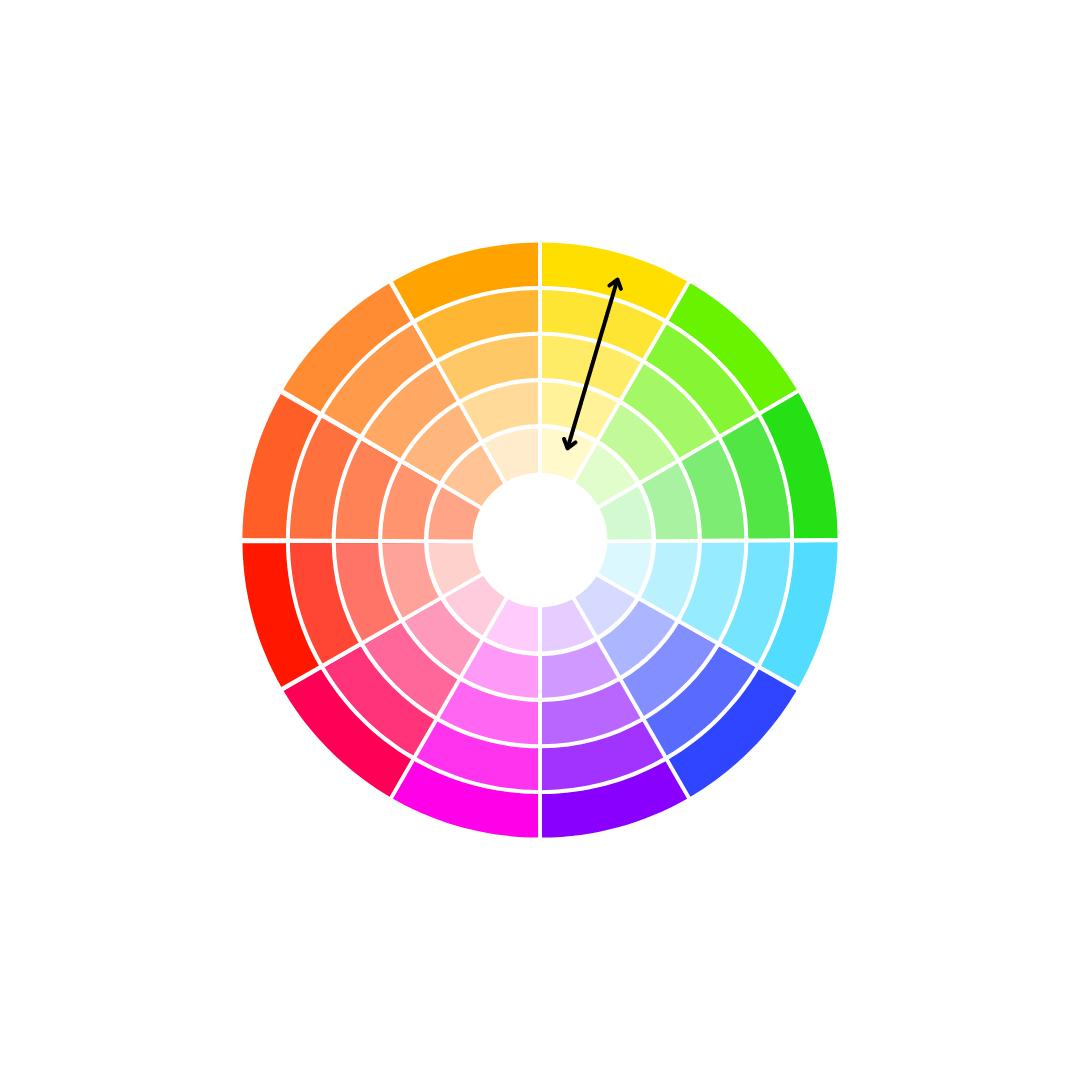
Monochromatic
A single colour in various shades, tints, or tones.
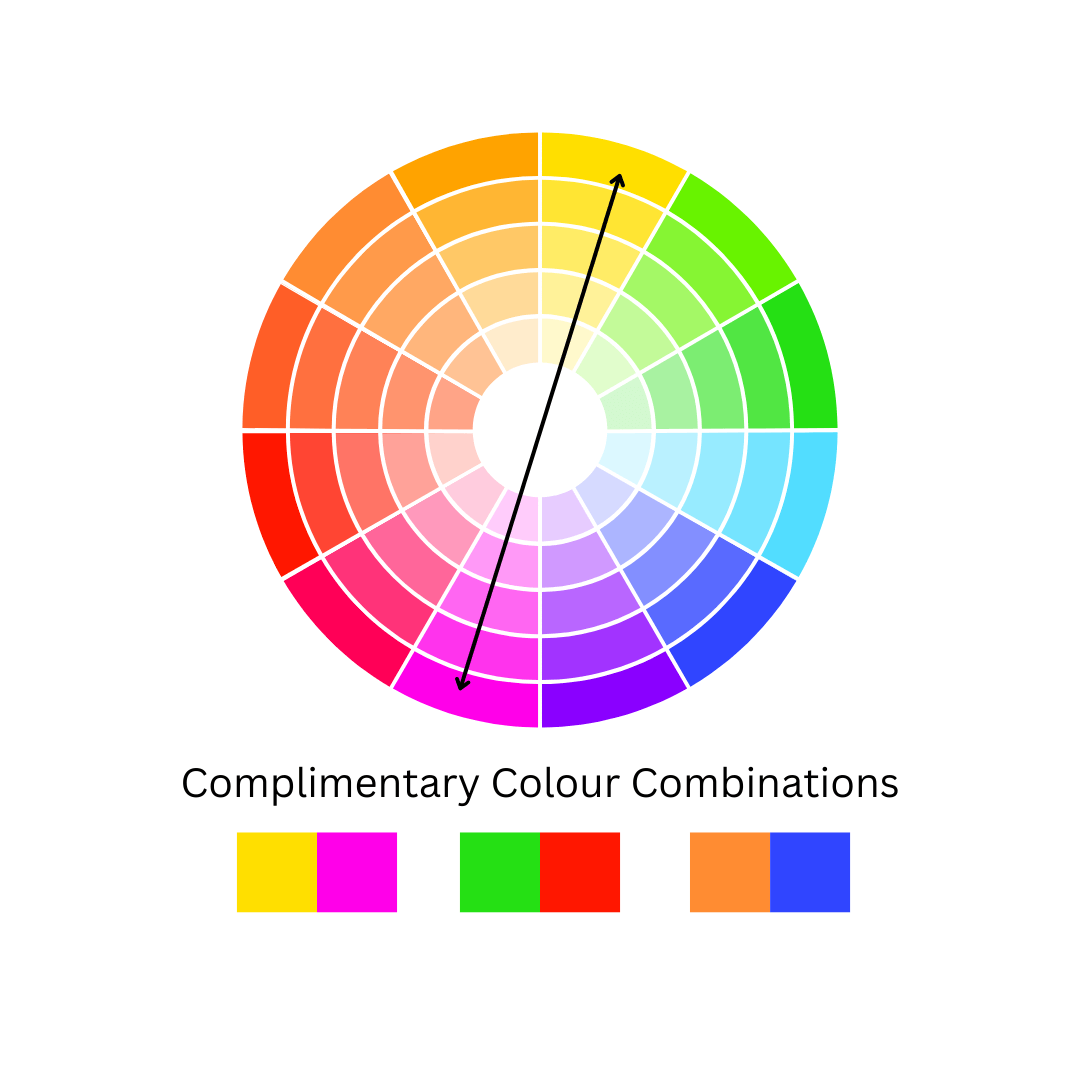
Complementary
Colours that are directly opposite each other on the colour wheel, such as red and green, blue and orange, or yellow and purple.
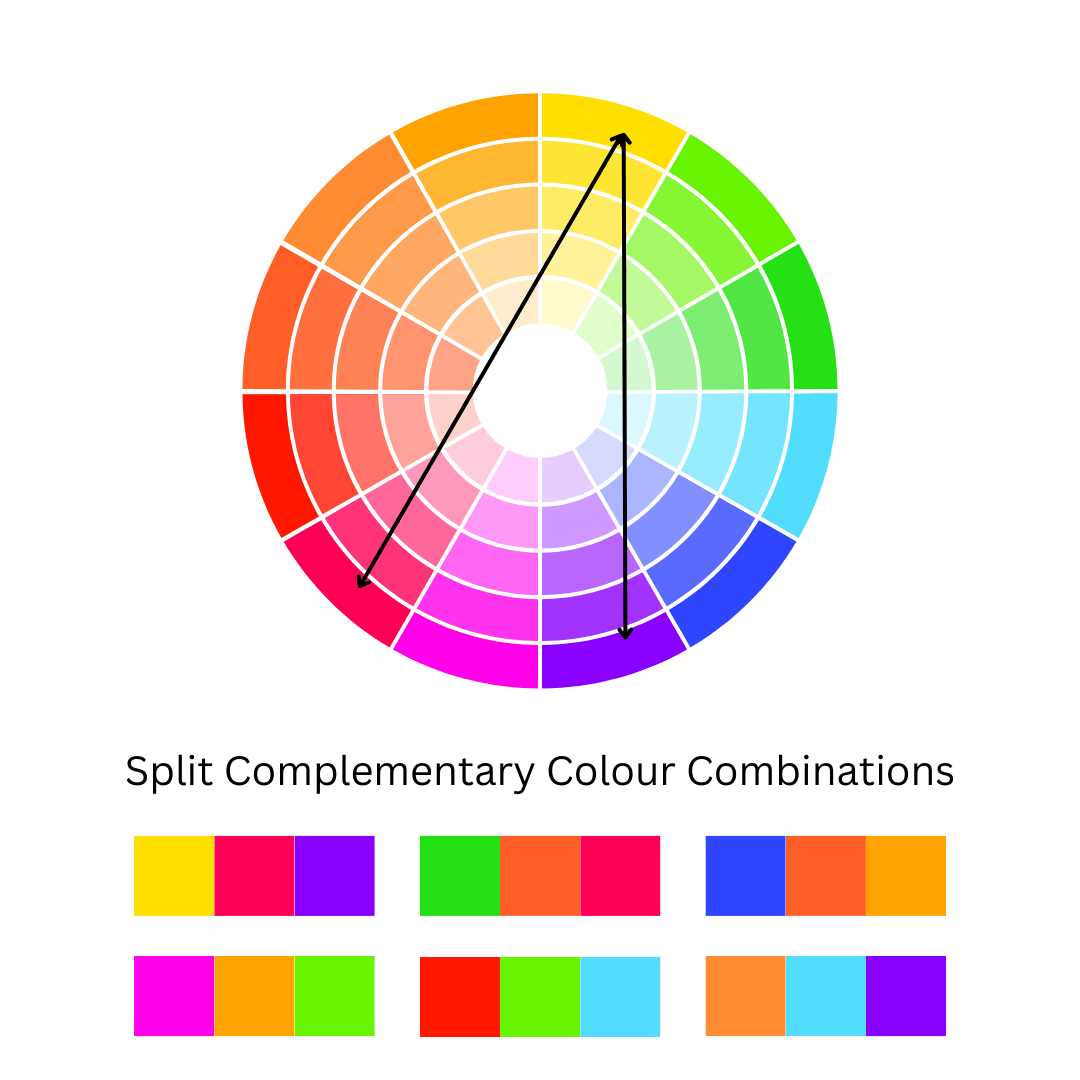
Split Complementary
A key colour paired with two complementary colours on either side of its direct opposite on the colour wheel. For example, with yellow as the key colour, the complementary colours would be red-purple and blue-purple.
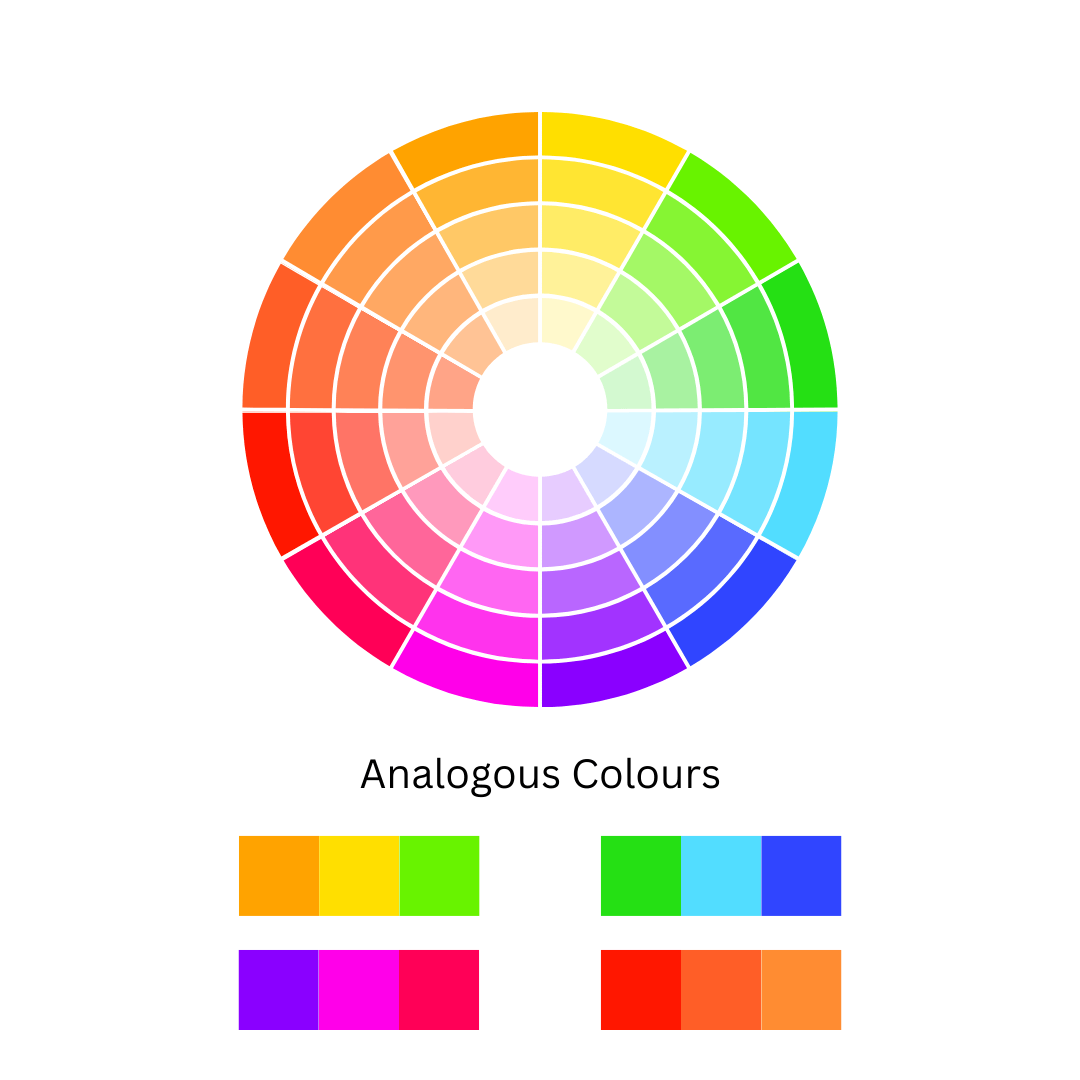
Analogous
A group of three colours that sit next to each other on the colour wheel, such as green-blue, blue, and blue-purple.
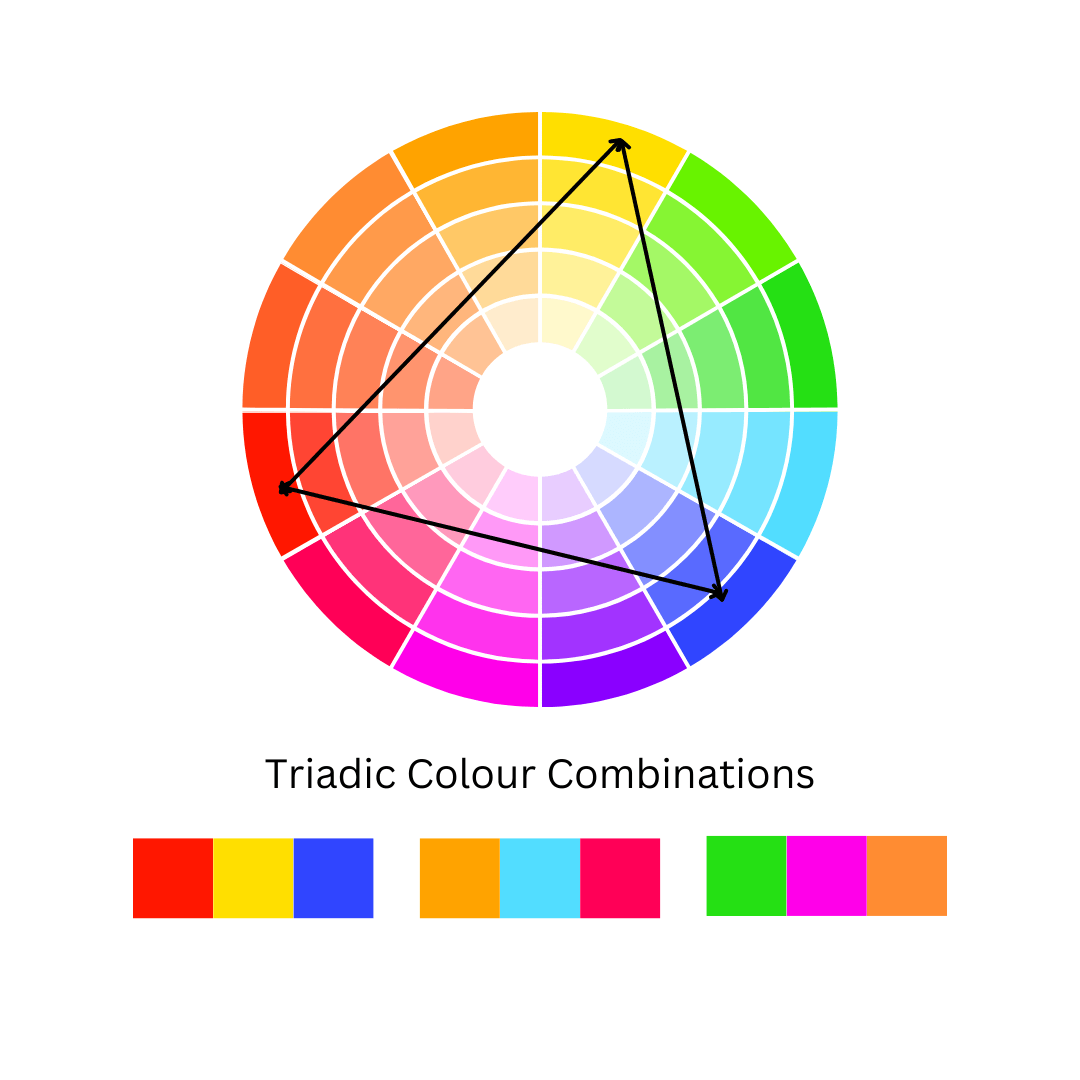
Triadic
A trio of colours evenly spaced around the colour wheel, like red, yellow, and blue.
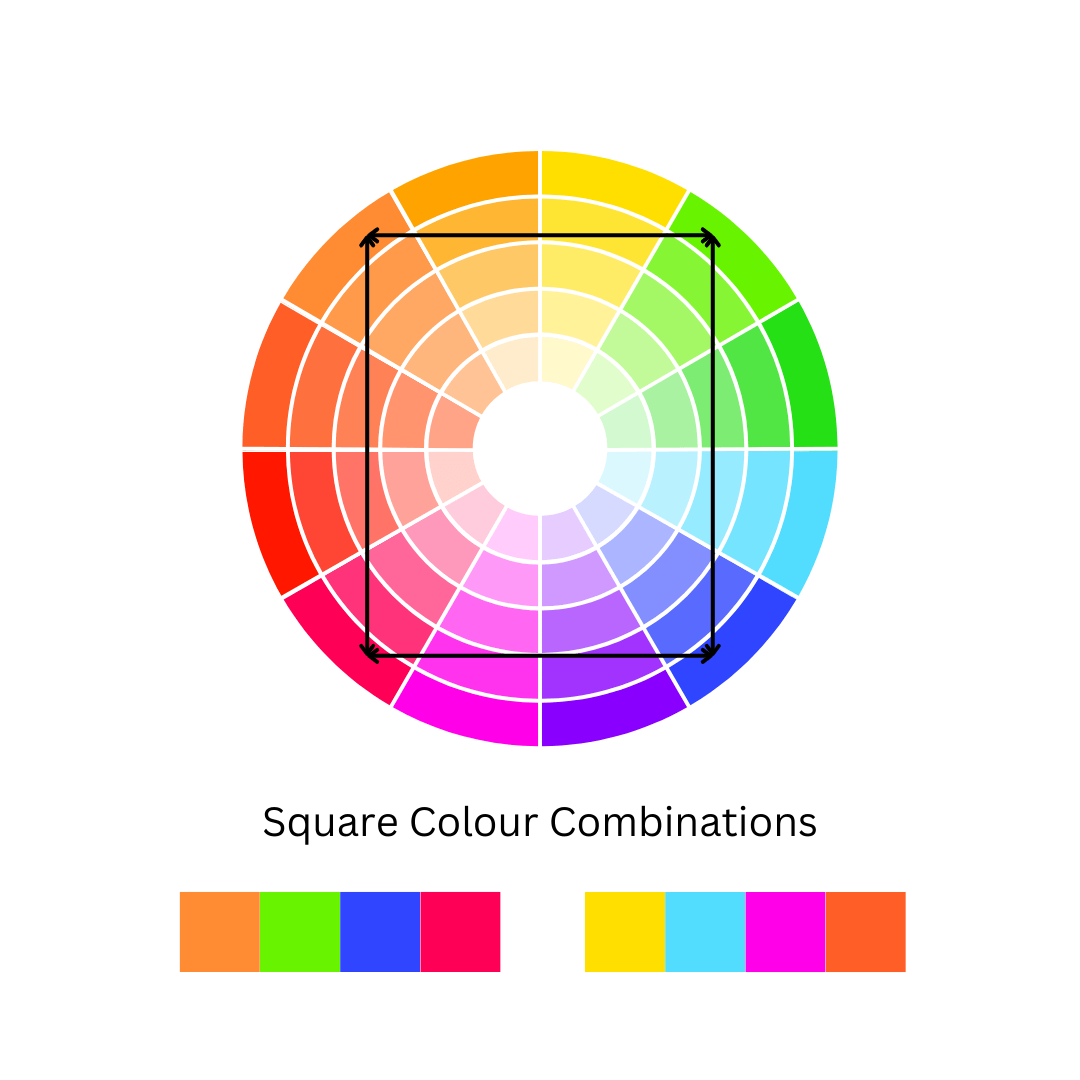
Square
Four colours that are evenly spaced apart on the colour wheel, forming a square when connected.
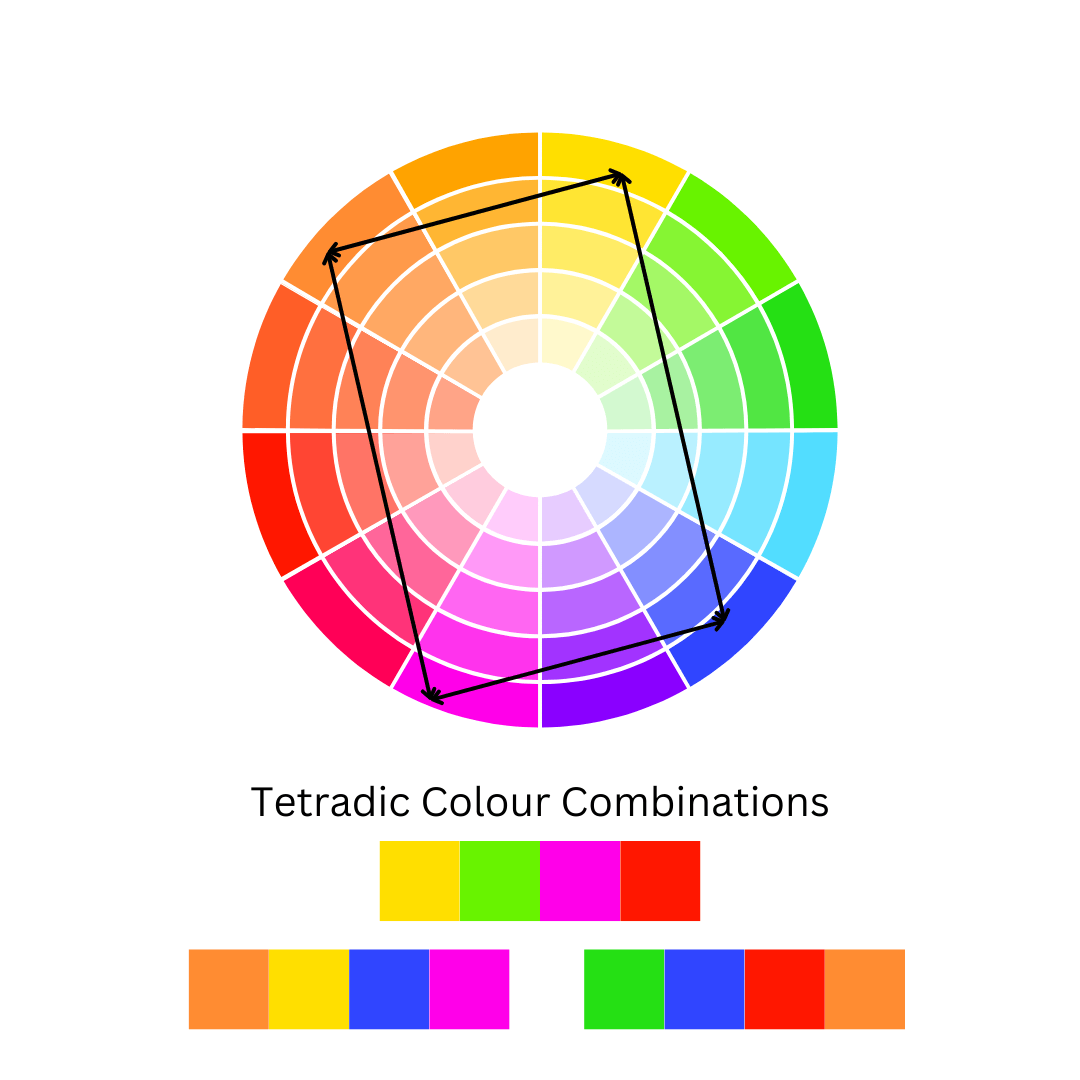
Tetradic
A colour scheme involving four colours that, when connected on the colour wheel, form a rectangle.
Now that we’ve explored the building blocks of colour theory, we can focus on the passionate world of red and discover how this colour can be used to create dynamic, harmonious designs.
Unveiling the Power of Red
With a solid understanding of colour theory, we’re ready to dive into one of the most powerful hues in the spectrum—red. As we’ve seen, the colour wheel and concepts like hue, value, and chroma play a crucial role in how colours interact and harmonize. Red, with its rich variety of shades and tones, presents a unique opportunity to apply these principles in exciting and creative ways.
Red holds a special significance, often symbolizing passion, strength, and energy. Interestingly, while we often think of red as a pure hue, it also has its variations in temperature. Red can be warm, leaning towards orange, or cool, with hints of blue. This versatility allows for dynamic combinations and applications in design and fashion.
Understanding how red fits into the broader framework of colour theory empowers us to explore its potential more deeply. We’ll examine how to effectively use red in different contexts, whether by combining it with complementary colours, creating monochromatic designs, or leveraging its various shades and temperatures to achieve specific visual effects.
Let’s explore the many facets of red and discover how this captivating colour can transform and elevate your creative projects.
Temperature and Shades of Red
One of the fascinating aspects of red is its range of temperatures and shades. Red can be warm, with vibrant tones that radiate energy, or cool, with deeper, more subdued hues. This temperature distinction significantly impacts its application in design and fashion.
-

Warm Red
These include shades like candy apple, scarlet and chili red. Warm reds exude passion and intensity, making them perfect for bold and captivating designs that demand attention.
-

Cool Red
Shades such as raspberry, carmine, and burgundy fall into this category. Cool reds evoke a sense of sophistication and calm, ideal for creating elegant and refined designs that convey a sense of tranquility.
Understanding reds temperature helps in creating colour schemes that either complement or contrast effectively, depending on the desired mood and impact.
Applying Colour Theory to Red
Now that we've covered the fundamentals of colour theory and coordination, it's time to dive into the bold and captivating world of red. Known for its ability to grab attention and evoke strong emotions, red has a unique versatility when it comes to styling. From deep crimson to bright scarlet, each shade carries its own impact, and when paired thoughtfully with other colours, red can elevate any look to a new level of sophistication.
Let’s explore the art of coordinating with red and discover how to make this striking colour work seamlessly in your wardrobe, whether you’re going for a subtle accent or a daring statement.

Monochromatic Schemes
Using a monochromatic colour scheme with red involves varying shades, tints, and tones of the colour, creating a cohesive and harmonious palette. This approach maintains a unified look while adding depth and visual interest through the different intensities of red. The result is a bold and sophisticated effect that exudes warmth and energy, perfect for making a striking statement.

Complementary Colour Schemes
Pairing red with its complementary colour, green, creates a high-contrast and visually striking palette. This combination balances the warmth of red with the coolness of green, resulting in a dynamic and eye-catching effect. The contrasting colours intensify each other, making them stand out while still achieving a sense of harmony. It’s a bold choice that adds energy and impact to any design.

Split Complementary Colour Schemes
Combining red with a split complementary colour scheme, such as yellow-green and blue-green, results in a balanced yet dynamic palette. This approach softens the intensity of a direct complementary scheme while still providing contrast and visual interest. The red adds warmth and vibrancy, while the cooler tones create a refreshing balance, making the design both lively and harmonious.

Analogous Colour Schemes
Pairing red with analogous colours, such as red-orange and red-violet, creates a warm and cohesive palette. This scheme blends colours that sit next to each other on the colour wheel, resulting in a harmonious and visually pleasing effect. The subtle variations in hue add depth and richness, while the overall warmth of the palette evokes a sense of energy and sophistication.

Triadic Colour Scheme
Combining red with a triadic colour scheme, such as blue and yellow, creates a vibrant and balanced palette. This approach adds dynamic contrast, with each colour bringing its own bold energy while maintaining harmony. The red adds warmth and intensity, while the other hues provide a lively balance, making the design visually engaging and full of character.

Square Colour Scheme
Pairing red with a square colour scheme, such as blue, green, and orange, results in a balanced and dynamic palette with evenly spaced colours around the wheel. This combination offers a mix of warm and cool tones, creating lively contrast while maintaining a sense of harmony. The red adds boldness and warmth, complementing the other hues and adding a captivating vibrancy to the overall design.

Tetradic Colour Schemes
Combining red with a tetradic colour scheme, such as green, blue, and yellow, creates a diverse and dynamic palette. This arrangement balances both warm and cool tones, offering a rich variety of contrasts while still maintaining harmony. The red adds a touch of intensity and warmth, anchoring the design and creating a lively interplay with the other colours, resulting in a bold and visually captivating effect.
Exploring Reds Emotional Impact
The emotional response elicited by red can vary significantly based on its shade and context. Lighter shades of red, like coral or blush, often evoke feelings of warmth and affection, while deeper reds, such as burgundy or crimson, can convey passion, power, and intensity. Understanding these emotional nuances helps in selecting the right shade of red for specific design goals or personal expressions, whether you're aiming to create a bold statement or a subtle accent.
Red Colour Schemes on the Streets
-

Monochromatic
-

-

-

Complimentary
-

-

-

Split Complementary
-

-

-

Analogous
-

-

-

Triadic
-

-

Conclusion
By delving into the colour theory of pink, we can better appreciate its versatility and potential. Whether you're designing a headpiece, choosing fabrics for fashion, or creating visual art, applying these principles will help you utilize pink effectively and creatively. Let’s continue to explore how this beloved tint can be transformed into stunning and impactful designs.
All images courtesy of Goggle

About the Author
Melissa Rath is an Australian milliner creating unique, handcrafted hats. She shares insights on design, styling, colour theory, the history of hats and all things millinery.
Featured collection
-
Green Beaded Millinery Crown by Melissa Rath Millinery
Regular price $320.00 AUDRegular priceUnit price / per -
Orange Millinery Pillbox by Melissa Rath Millinery
Regular price $240.00 AUDRegular priceUnit price / per -
Rainbow Millinery Fascinator by Melissa Rath Millinery
Regular price $250.00 AUDRegular priceUnit price / per -
Red and Black Millinery Saucer Hat by Melissa Rath Millinery
Regular price $240.00 AUDRegular priceUnit price / per





















